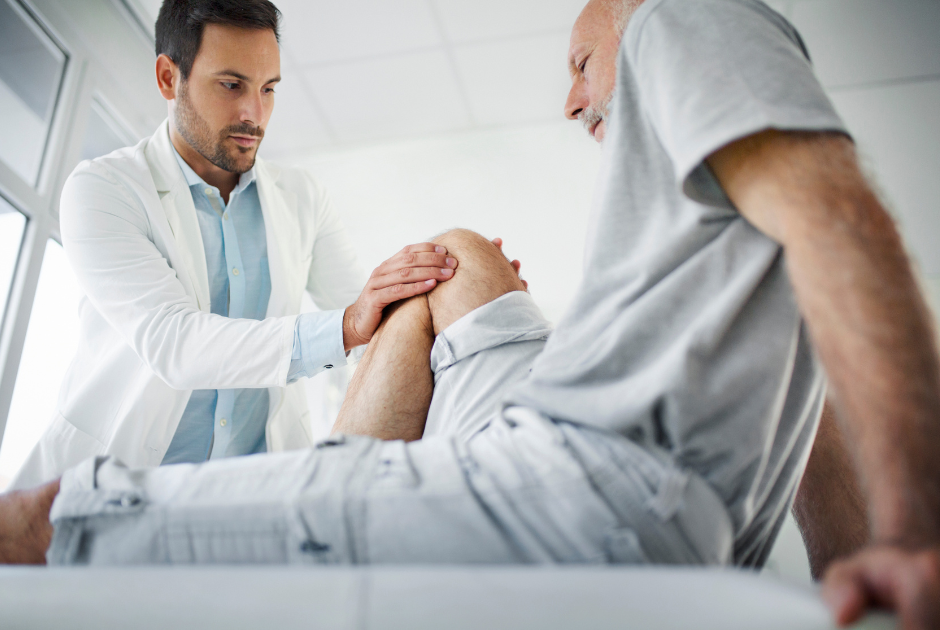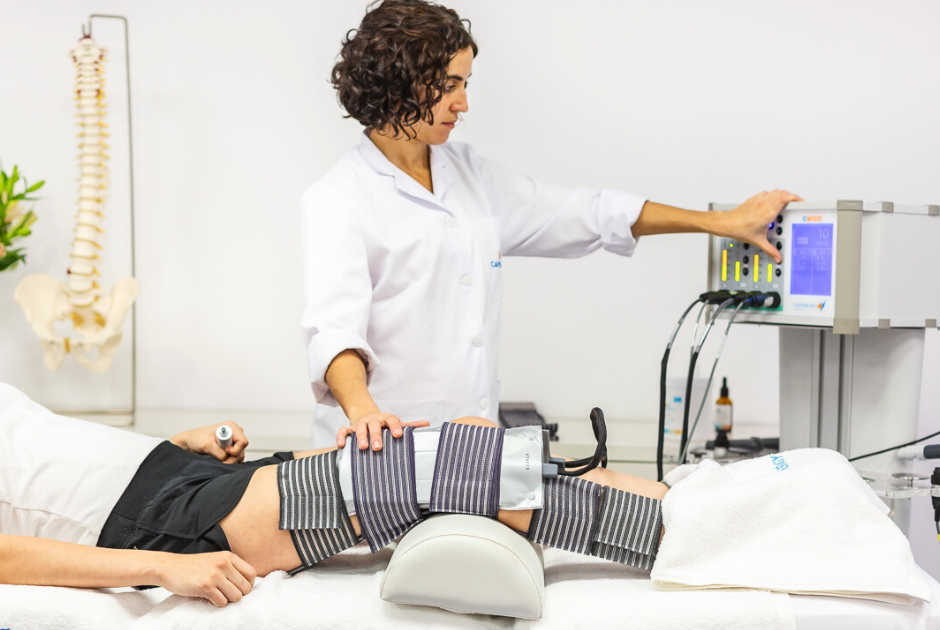
Arthrosis is a chronic, progressive and degenerative condition that causes the wear and tear of the bones. There is currently no cure for it.
Arthrosis is endemic across the world. An estimated 300 million people in the world live with this condition and it’s the main cause of impairment among adults. Over the last 20 years, the presence of this condition has increased by 70% In Spain, around 7 million people suffer from arthrosis.
The incidence of this condition among adults older than 40 years, is estimated to be around 29,35%, affecting the hands, the cervical and lumbar spine, hips and knees.
What is arthrosis?
Arthrosis is a chronic condition that causes pain in general, limiting mobility, and as a result, reducing daily life activities and affecting work. On the workfloor it is considered an occupational disability as it impedes carrying out basic functions and limits physical effort.
This condition furthermore comes with a high economic and social cost for Western society, as it is an important cause of functional incapacity regarding processes of the locomotive system and the second cause of permanent disability following cardiovascular diseases. It furthermore implies high consumption rates of certain drugs ( mostly NSAIDs and simple analgesics) and other sanitary resources.
The economic impact of arthrosis as a condition is estimated to take up 0,5% to 1% of the GDP of different countries, both because of the consumption of drugs as the derived surgical interventions for hip or knee implants.

Without any doubt, arthrosis is more frequent in elderly people, women and as a consequence of traumatismes. As said before, the main symptoms are intermittent pain and reduction of articular mobility.
The most frequent types of arthrosis are, according to incidence:
- Arthrosis of the hands
- Arthrosis of the knee
- Cervical arthrosis
- Lumbar arthrosis
On the other hand, the pain experienced in the process can have different causes. In the early stage, it is caused by the inflammation of periatricular structures, like the capsule, the tendons or the sacs, as well as synovial inflammation induced by multiple factors: micro-traumatisms, deposits of crystals and synovial irritation caused by cartilaginous debris.
The cartilage, however, never causes the pain, as this tissue does not have any nerve endings.
Capenergy: the alternative treatment for arthrosis
Tecar therapy in general is a good treatment option for arthrosis, thanks to the benefits the generated hyperthermia has on the treatment area. More so when comparing to the iatrogenic effects derived from the intake of drugs prescribed in a standard treatment.
With a Capenegy tecar therapy treatment, we can obtain the following benefits:
- Reduce inflammation of the worn down structures.
- Reduce pain.
- Slow down the deterioration process.
Diathermy or tecar therapy is furthermore painless and the patient perceives the treatment as a pleasant massage during which he will feel a pleasant warmth or temperature increase, which is the so-called hyperthermia or artificial fever.

Without doubt, the use of new TECAR technologies in the field of physiotherapy allows carrying out treatments that are useful for this type of patient, even if unknown to most rheumatologists. But when we talk about 1st generation TECAR, we must take into account certain limitations, because of the nature of a manual treatment with a capacitive or resistive electrode.
In the case of CAPENERGY’s 2nd generation TECAR therapy, these limitations do not exist because of the technological differences. More complete and effective results can be achieved in a shorter period of time, from the first session on. The physiotherapist can carry out a personalized and efficient treatment of not only the symptoms but also the cause.
What are the benefits patients with arthrosis can obtain with Capenergy?
Because of the characteristics of the pathology, CAPENERGY’s TecarEvolution or 2nd generation Tecar Therapy, is an efficient therapeutic alternative for the treatment of arthrosis as it soothes the pain by reducing the inflammation of the tissues. Thanks to the vascularization of the so-called active plates, blood supply to the treatment area is improved and the deposits of crystals and accumulated debris are mobilized by the electromagnetic effect. This is one of the biggest advantages for a patient suffering from arthrosis.
Arthrosis is a disorder that currently cannot be cured, but the mitigation of the symptoms, however, can increase the patient’s life quality and this is precisely what CAPENERGY does.
Different types of arthrosis exist, but the most common cases are arthrosis of the knee and rhisarthrosis (arthrosis of the thumb), which are areas that require a different application but based on the same concept.
Any type of DIATHERMY, or TECAR THERAPY, with capacitive or resistive manual applications allows the physiotherapist to perform a manual massage of the articulations with a protocol of at least 30 minutes per treatment area: 15 minutes with the capacitive electrode and 15 minutes with the resistive electrode.
In case of CAPENERGY, the treatment is much faster and efficient, taking into account that starting from C200, a combined CAP-RES treatment of 30 minutes can be carried out.

For the first 15 minutes, we massage with the manual capacitive and resistive electrodes, the so-called “crossfire” (using both electrodes at the same time), which allows us to work both the superficial and profound levels. This way, both the articular cartilage and the bone tissue benefits from the treatment. This means there is no need to discriminate or limitate the treatment according to the type of tissues that are being treated (hard or soft tissue).
To end the treatment, we can apply the automatic plates for 15 minutes. Thanks to its 200cm2 surface, the plates enable the vascularization of a large surface and the swiping of the debris and waste mobilized through the previous massage, generating an analgesic and repairing effect in the area.
In short, CAPENERGY’s high power radiofrequency devices, equipped with various channels (from 2 to 4) and a power ranging from 620W to 1240W, allow for a more efficient and less time consuming treatment. In case of patients suffering from different types of arthrosis, for instance arthrosis of the knee and risarthrosis (arthrosis of the thumb), we can treat both pathologies at the same time with the same device, combining manual and automatic treatments.
Advantages of the treatment with 2nd generation tecar therapy
One of the biggest advantages of the treatment of arthrosis with Capenergy can be obtained when treating large extremities or body parts, as the treatment can be carried out with the automatic plates which deliver 6 times more power than a manual electrode. After the automatic treatment, a combined manual CAP-RES treatment is carried out as well.

The capacitive electrode is used also for the relaxation of muscles that are strained due to bad body posture. The combination with the resistive electrode, the big star of the treatment as it concentrates the energy in the low-water-content tissues, that is, the articulations, slowing down the wear and tear of the bones and the progress of arthrosis.
The biggest advantage of Capenergy’s second generation radiofrequency is that both electrodes can be used at the same time. You don’t have to use the capacitive electrode first and then the resistive electrode, which means the manual massage with cross-fires can be performed in less time, obtaining major benefits and efficiency for the patients.
On the other hand, in case of arthrosis of the wrist or thumb the treatment is shorter: a smaller articulation does not require the same amount of time. 10 minutes with the capacitive electrode and 10 minutes with the resistive electrode are enough.
In both cases, the treatment ends with a lower limb drainage to remove all the toxins and sooth the pain experienced in the extremity. This treatment can only be performed with Capenergy devices and the results have proven to be far more efficient than those obtained with classic radiofrequency.
The ideal temperature would be a moderate temperature of 40-43ºC, considering elderly persons may have altered sensitivity, more fragile skin and bad vascularisation. Thanks to the temperature sensor, we can visualize the temperature on the screen and carry out a treatment that’s safe for both the patient and the therapist.
Capenergy, the most efficient treatment for the treatment of arthrosis
We can confirm that right now, Capenergy is the most efficient tecar therapy available on the market. The alternating sinusoidal current acts on our body at high frequencies that range from 0,8 Mhz, 1 Mhz to 1,2 Mhz to boost lymphatic drainage, soothe pain, reduce oedemas or reduce inflammation.
The frequency is selected through an intelligent mapping system that allows adapting the treatment to the frequency that allows the best absorption based on the degree of inflammation and the selected treatment area.
The professionals using CAPENERGY for the preventive treatment of degenerative pathologies such as arthrosis, slow down the process of wear and tear, possibly avoiding more critical solutions such as surgery.
In short, Capenergy’s technology, reactivates different physiological effects necessary for the treatment of inflammatory disorders, reduction of pain, improvement of tissue trophism, the generation of collagen and the increase of the articular range of movement.
Capenergy’s 2nd generation tecar therapy, in combination with therapeutic exercises and manual techniques, is a promising alternative for the treatment of arthrosis.
SIf you want to boost your services and expand your treatment offer, Capenergy’s second generation tecar therapy devices are an option you have to look into. Discover how to take your skills and results to the next level with this avant-garde technology.
Would you like to know more about Capenergy’s tecar therapy. Request a free demo.

Telephone No.934 77 43 48